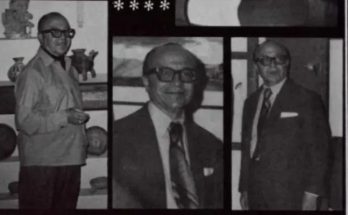By Luis Felipe Rodriguez
At the end of the 19th century, the recently started joint-stock company Romero Rodil y Sauto, decided to venture into a different area. The owners wanted to install a textile factory and rely on highly technical ways of using electrical energy to move its machines.
They purchased rights to the waters of the Ciénega de Landeta, stored in Los Batanes dam, known as Las Colonias since the 1950s. After acquisition and start-up, a very modern textile factory was designed.
In 1903 the Aurora neighborhood was inaugurated through the works of Felipe López. By 1906 the dam was fully adapted to its new use. A quarry plaque, still preserved to this day, documents that fact and year. Among the important tasks was the design and construction of the support pillars for the construction pipe, which required hydraulic works. The conduction lines ran along the side of the canyon and through them flowed the waters of the Ciénega and other minor streams. The water was then channeled to the factory’s turbines. This water had filled mills at the bottom of the canyon for several centuries. The remains of some walls still remain, testifying to the existence of those facilities on the site.
The thriving industrial activity has been recorded in various written documents. Adolfo Dollero points this out in his book: “We visited several very lively places in the surroundings; La Aurora cotton spinning and weaving factory is small, but splendidly installed with English machinery of the latest known models. Said factory was moved by hydraulic power produced by a large water dam, and by a spring that belongs to the same factory. In those days they were assembling a modern Vorth brand turbine that should serve to increase the driving force. La Aurora produces very good yarn, especially for rebozos and good blankets. In the factory there was absolute cleanliness and order and we observed that all the workers dressed very neatly wearing modern hats instead of the classic Mexican hats with large wings.”

The factory continued functioning without major mishaps until 1924. In that year, a new owner came and decided to raise the level of the dam by a meter and a half in order to collect more water. The reason for this was that during rainy seasons with little precipitation, there was danger of insufficient water supply for the electric turbines.
Through 1928 the problems of water supply to the power plant continued, and it was decided, in agreement with the owner of the dam and the land, to make some cuts to increase the collection of water to the dam. In the mid-1940s, water supply, the basic element for generating electricity was intermittent and routine operation became a real problem. When the embankments and dam ceased to function, water was taken from the catchment areas. Then deforestation and the uncontrolled pumping of underground water caused the factory to stop operating exclusively on hydroelectric energy; simultaneous generation of electricity with diesel engines began; as well as reliance on electricity services from the municipal network. Hydroelectricity gradually decreased, finally becoming the least contributing factor in the operation of the plant. The dream of industrial and agricultural economic self-sufficiency had come to an end
The plant continued to function until April 9, 1991, when it finally closed. The hydraulic turbines and auxiliary power generation equipment is preserved to this day in the facilities which have been converted into commercial art and design galleries. The last owners were Mr. Garay: Mr. Manuel, Mr. Francisco and Mr. Rufino.
Source: The water in San Miguel de Allende, Enrique García y García.





